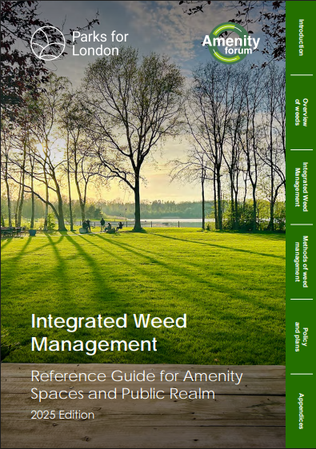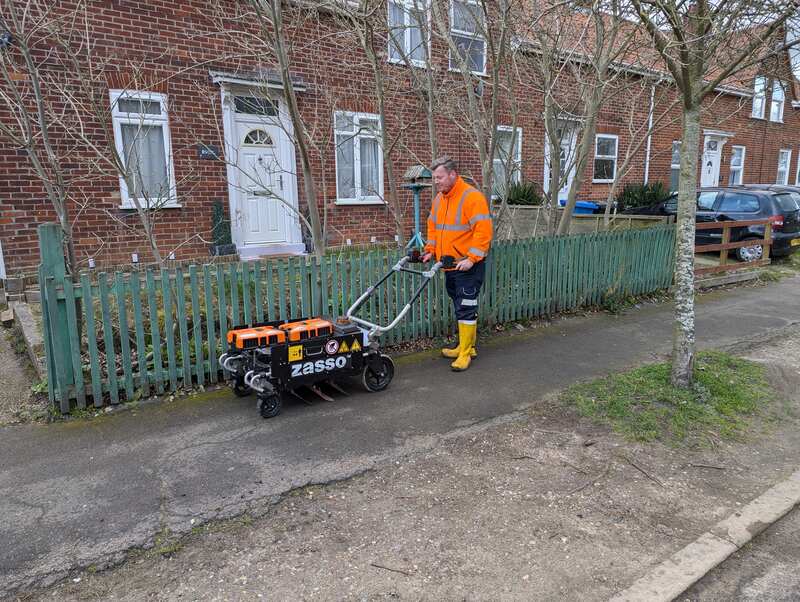From Policy to Pavement: A Practical Guide to Integrated Weed Management for Councils
This is your council's essential roadmap for turning the 2025 National Action Plan into a compliant, effective, and respected public space strategy.
The 2025 Pesticide National Action Plan (NAP) is here, and it represents a fundamental shift in how public spaces are managed in the UK. For local councils, this isn't just another piece of guidance; it's a call to lead the transition towards more sustainable, integrated, and publicly acceptable methods of weed control.

The pressure is on. Residents are more environmentally aware than ever, budgets are tight, and this new landscape provides the opportunity for and necessitates a more integrated approach than the traditional 'spray first' model. The NAP codifies this new reality, mandating a move towards Integrated Pest Management (IPM) as the standard approach.
But what does this mean in practice? How do you move from policy to pavement?
This guide provides a clear, four-step roadmap for councils to not only achieve compliance but to seize this as an opportunity to create safer, better-performing, and more respected public spaces.
Step 1: Understand the Responsibility (The NAP Framework)
The core principle of the NAP is simple: all professional users of pesticides must consider integrated approaches first. This requires a documented, systematic plan that prioritizes prevention and non-chemical controls. For a council, this means you must be able to demonstrate that you have:
- Assessed the problem and the site.
- Considered preventative measures (like detritus management).
- Evaluated non-chemical options (mechanical, thermal).
- Justified the use of chemical pesticides as a targeted, last resort, not a default first step.
Failing to have a clear, documented Integrated Weed Management (IWM) plan is no longer a safe option.
Step 2: Build the Blueprint (The Official IWM Reference Guide)
A plan requires a blueprint. Fortunately, the definitive blueprint has now been created.
We were proud to collaborate with DEFRA, the Amenity Forum, and Parks for London to produce the 2025 Integrated Weed Management Reference Guide. This official, Defra-funded document is the single most important tool for building your council's IWM plan.
It provides a step-by-step framework (see page 8) for assessing your sites and choosing the right combination of methods. It moves the conversation away from a simple debate about chemicals and towards a professional discussion about long-term asset management—showing how proactive sweeping and brushing not only control weeds but also prevent pavement damage, reduce trip hazards, and extend the life of your infrastructure.

Step 3: Empower the People (The Lantra Assessed Training)
A world-class plan is ineffective without a skilled team to implement it. To bridge this gap, we worked directly with Lantra to develop the first-ever Assessed Training Course on Awareness of Integrated Weed Management.
This course equips your grounds maintenance staff and contractors with the knowledge to:
- Understand the principles of IWM.
- Correctly identify and assess weed problems.
- Safely and effectively operate non-chemical equipment.
- Make informed decisions on-site that align with your council's IWM plan.
Investing in this training ensures your team is competent, confident, and fully aligned with the requirements of the NAP, reducing operational risks and improving results on the ground.
Step 4: Deploy the Right Tools (The Kersten Solution)
A great plan and a skilled team need the right equipment to be effective. The IWM Reference Guide makes it clear that mechanical methods like sweeping and brushing are the cornerstone of a modern, preventative strategy.
This is where we come in.
At Kersten, we provide the robust, efficient, and professional-grade equipment designed to execute your IWM plan. From powerful weed brushes that clear years of soil buildup to versatile sweepers that maintain clean edges, our machines are the physical embodiment of the 'prevention-first' philosophy. They are the tools that turn your policy into a pristine, well-maintained public space.

You can explore the full range of equipment and see how it aligns with the IWM framework on our dedicated resource page: https://kerstenuk.com/integrated-weed-management-for-amenity
Your Partner in Meeting the NAP Mandate
The 2025 National Action Plan isn't just a set of recommendations; it establishes clear statutory obligations for every council. The language is unambiguous, moving Integrated Weed Management from a 'nice-to-have' to a legal necessity.
Consider the direct requirements outlined in the plan:
The NAP "Requires that all necessary measures are taken to promote low pesticide-input pest management, giving priority to non-chemical methods wherever possible..."
And further: "Sustainable physical, biological and other non-chemical methods must be preferred to chemical methods if they are practical and provide satisfactory pest control."
For a council, the message is clear: the status quo is no longer compliant. Your operational plans must now actively demonstrate why non-chemical methods were not chosen before a pesticide was used. This is a fundamental change in process, and it requires a new approach built on a robust plan, a skilled team, and the right equipment.
This documented approach is now a critical component of modern risk management. In an era of heightened public scrutiny, a clear IWM plan is a council's primary defense against regulatory challenges, public complaints, and the significant reputational damage that can arise from being seen to ignore statutory environmental duties.
By building that plan with the official guide, empowering your team with certified training, and deploying the right professional equipment, your council can confidently meet these new standards and set a new benchmark for public space management.
If you're ready to discuss how to build and implement a compliant IWM plan for your council, contact us today for a free consultation or to book an on-site demonstration.
No comments yet. Login to start a new discussion Start a new discussion